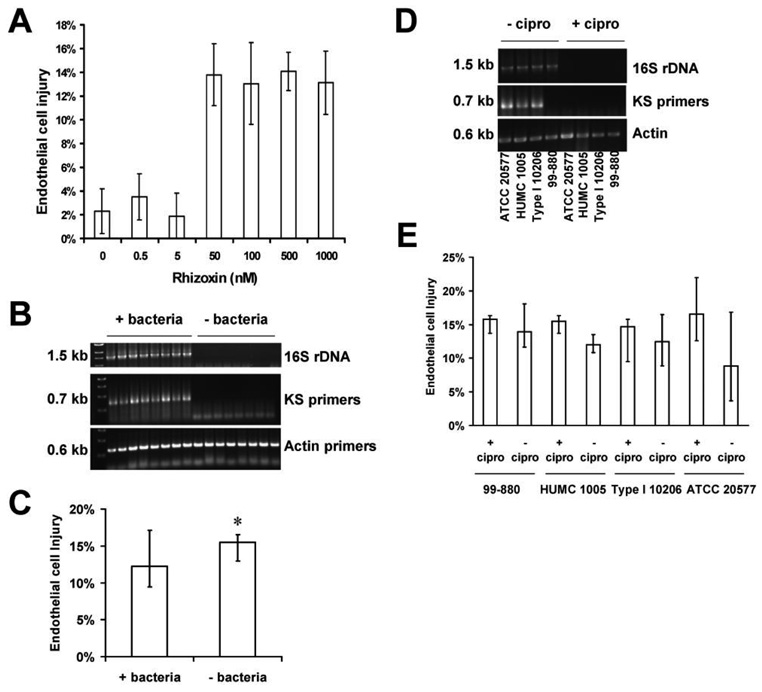Figure 3.
Results of endothelial cell injury experiments. Although rhizoxin causes damage to endothelial cells, endothelial cell injury caused by agents of mucormycosis was neither affected by the presence of bacterial endosymbionts nor altered by bacterial eradication with ciprofloxacin treatment. A, Demonstration that pure rhizoxin toxin at concentrations ≥50 nmol/L is capable of inducing endothelial cell injury. Purified rhizoxin (Sigma) was incubated with endothelial cells for 6 h, and injury to endothelial cells was measured using our 51Cr-release assay on a 96-well plate [18]. B, Polymerase chain reaction of genomic DNA extracted from Zygomycetes, demonstrating the presence of rhizoxin-producing bacterial endosymbionts in some Rhizopus isolates but not others. C, Pooled results for endothelial cell injury caused by Rhizopus that harbor bacteria (+ bacteria) and bacteria-free Rhizopus (n = 8 in each arm). D, Eradication of bacteria by means of ciprofloxacin. Bacteria-harboring Rhizopus strains were rendered free of bacteria by treating the fungus with ciprofloxacin at 60 µg/mL, and the absence of bacteria was verified by a lack of amplificatio of 1.6 kb of 16S rDNA. E, No effect of ciprofloxacin treatment on the ability of selected Rhizopus isolates to cause endothelial cell injury. The bacteria-free organisms generated in panel D were compared with their corresponding parent strains that harbored bacteria with respect to their ability to cause endothelial cell injury (n = 8). Data are displayed as medians plus interquartile ranges. *P > .05, compared with Rhizopus-harboring bacteria.

